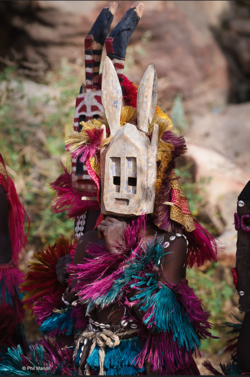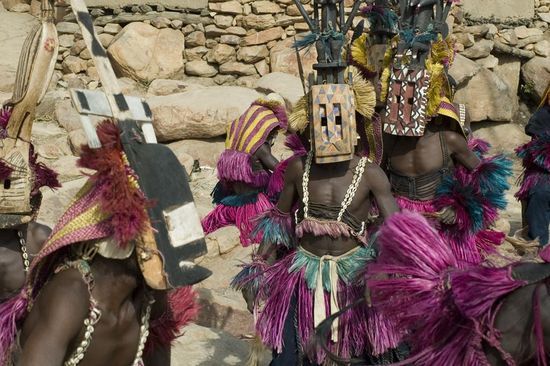Difference between revisions of "User:Michelle"
| Line 104: | Line 104: | ||
[[File:Schermafbeelding 2015-09-28 om 23.21.26.png|400px]] [[File:Schermafbeelding 2015-09-29 om 00.21.12.png|400px]] [[File:Makingof.png|550px]] [[File:Makingof2.png|550px]] Drawing the mask 3Dimensional in Rhinoceros + slicing it vertically | [[File:Schermafbeelding 2015-09-28 om 23.21.26.png|400px]] [[File:Schermafbeelding 2015-09-29 om 00.21.12.png|400px]] [[File:Makingof.png|550px]] [[File:Makingof2.png|550px]] Drawing the mask 3Dimensional in Rhinoceros + slicing it vertically | ||
| − | [[File:IMG 9015.jpg|250px]] [[File:IMG 9112.jpg|440px]] [[File:IMG | + | [[File:IMG 9015.jpg|250px]] [[File:IMG 9112.jpg|440px]] [[File:IMG 9269.jpg|250px]] Slices lasercut in seethrough perspex and adjusted together with a substance that melts the perspex together. The result is a more abstract and seethrough version of the original. |
While I was working behind the computer and looked at the mask standing on the table, I noticed that the sun was shining on the mask and revealing a new pattern. | While I was working behind the computer and looked at the mask standing on the table, I noticed that the sun was shining on the mask and revealing a new pattern. | ||
Revision as of 21:30, 26 October 2015
DIGITAL CRAFT
MICHELLE LIEVAART
Fantastic Forgeries
This is a mask from Mali.
Mali is known for their traditional mask dances performed by important Dogon rituals connected with the dead.
The mask society, that exists only of men, performs the rituals.
The masked dancers come to the village to bring fertility and wisdom.
The Dogon are an agrarian people of about 600,000 who live in the west African country of Mali and Burkina Faso.
The Dogon are among the most famous iron workers in Africa.
In earlier times, Dogon craftsmen had perfected methods of refining iron ore into steel, and Dogon blacksmiths were renowned for their skillfully made tools and weapons.
Much of the ore refinement operations are gone now from Dogon society, the artisans relying instead on scrap steel salvaged from junk cars and railroads.
The deeper meaning of the kanaga mask apparently pertains both to God and to the arrangement of the universe. The disparity between these two interpretations illustrates the gaps in our understanding of Dogon art.
The usage of masks is as old as mankinds existence.
In countless cultures are masks part of different rituals.
By wearing the mask the wearer loses their own person and comes in contact with the spiritual world. The rituals where meant to prepossess the spirits for a good harvest or the cure of the ill.
What intrigues me is that mask were used to loose your own person but they are often showing features of the human face in a deformed way.
By copying this mask in another material that is see-through I want to reveal the mystery behind the mask. Create a new reality of what could be hiding behind the mask.
So instead of looking from behind the mask into the world, I will let the spectator view the world behind the mask.
What would the wearer look like? Why would he/she/it hide it's face? Why does the mask look like a deformed face? Is it actually deformed? What if that is their perception of beauty?
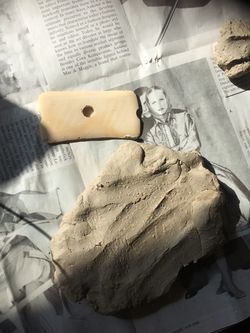
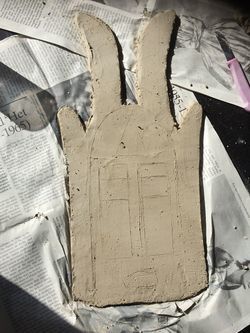
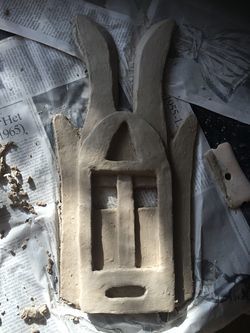
Making the mask out of clay to use for a mold: FAIL
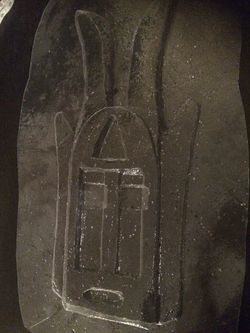
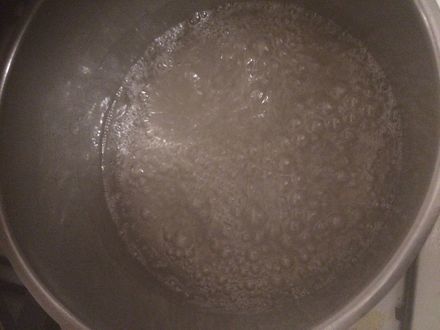
Making a mask out of sugar: FAIL
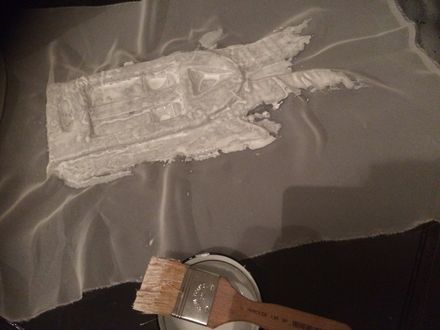
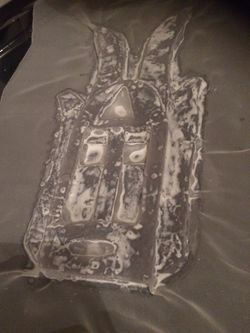
Making a mask out of fabric with textile hardener: FAIL
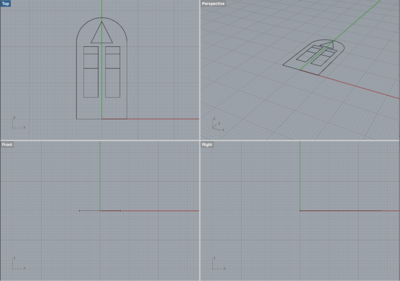
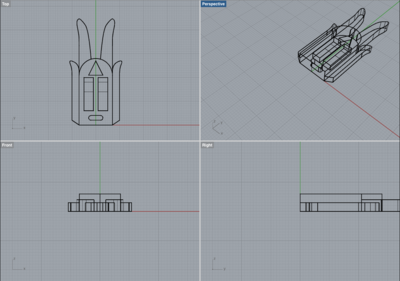
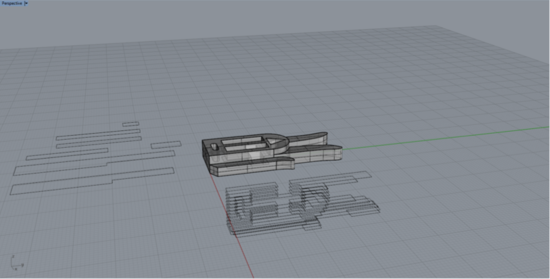
Drawing the mask 3Dimensional in Rhinoceros + slicing it vertically
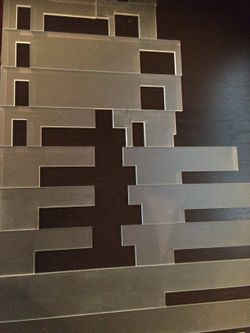
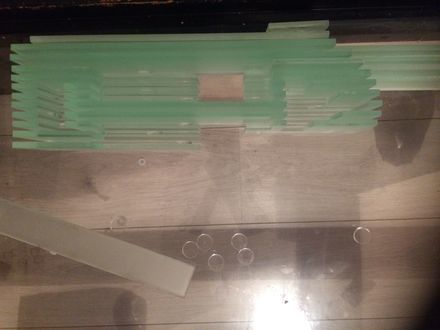
Slices lasercut in seethrough perspex and adjusted together with a substance that melts the perspex together. The result is a more abstract and seethrough version of the original. While I was working behind the computer and looked at the mask standing on the table, I noticed that the sun was shining on the mask and revealing a new pattern. Could this be the mystery that was hiding behind the mask?
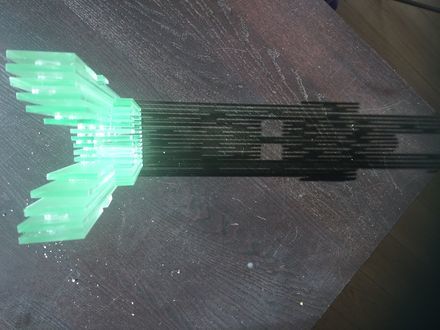
I decided to do some more tests to discover the face behind the mask.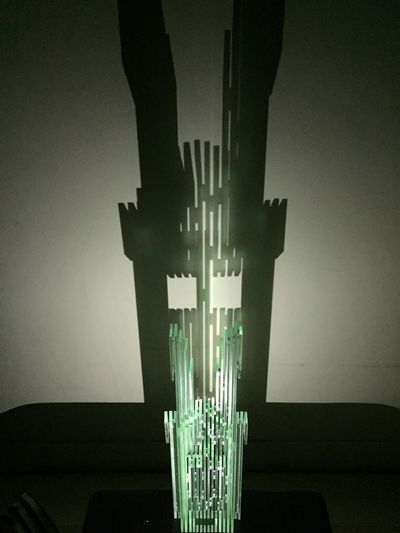
I would like to transform this shadow, this new reality/face behind the mask, into a textile. To create the textile I want to use coloured strings (like what the Dogon people are wearing) and use and old knotting technique called Macramé, in a more abstract way to recreate the face behind the mask in a textile.
Using unknown technique: macramé, in a more abstract way
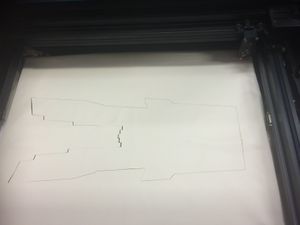
Lasercutting the contour of the new face and picking colours

